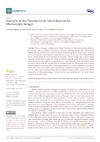Identificador persistente para citar o vincular este elemento:
https://accedacris.ulpgc.es/jspui/handle/10553/107176
| Campo DC | Valor | idioma |
|---|---|---|
| dc.contributor.author | Dghim, Soumaya | en_US |
| dc.contributor.author | Travieso-González, Carlos M. | en_US |
| dc.contributor.author | Burget, Radim | en_US |
| dc.date.accessioned | 2021-05-11T07:02:07Z | - |
| dc.date.available | 2021-05-11T07:02:07Z | - |
| dc.date.issued | 2021 | en_US |
| dc.identifier.issn | 1424-8220 | en_US |
| dc.identifier.other | Scopus | - |
| dc.identifier.uri | https://accedacris.ulpgc.es/handle/10553/107176 | - |
| dc.description.abstract | The use of image processing tools, machine learning, and deep learning approaches has become very useful and robust in recent years. This paper introduces the detection of the Nosema disease, which is considered to be one of the most economically significant diseases today. This work shows a solution for recognizing and identifying Nosema cells between the other existing objects in the microscopic image. Two main strategies are examined. The first strategy uses image processing tools to extract the most valuable information and features from the dataset of microscopic images. Then, machine learning methods are applied, such as a neural network (ANN) and support vector machine (SVM) for detecting and classifying the Nosema disease cells. The second strategy explores deep learning and transfers learning. Several approaches were examined, including a convolutional neural network (CNN) classifier and several methods of transfer learning (AlexNet, VGG-16 and VGG-19), which were fine-tuned and applied to the object sub-images in order to identify the Nosema images from the other object images. The best accuracy was reached by the VGG-16 pre-trained neural network with 96.25%. | en_US |
| dc.language | eng | en_US |
| dc.relation.ispartof | Sensors (Switzerland) | en_US |
| dc.source | Sensors [ISSN 1424-8220], v. 21 (9), 3068, (Mayo 2021) | en_US |
| dc.subject | 220990 Tratamiento digital. Imágenes | en_US |
| dc.subject.other | Deep Learning | en_US |
| dc.subject.other | Disease Detection | en_US |
| dc.subject.other | Image | en_US |
| dc.subject.other | Image Processing | en_US |
| dc.subject.other | Machine Learning | en_US |
| dc.subject.other | Nosema Disease | en_US |
| dc.title | Analysis of the nosema cells identification for microscopic images | en_US |
| dc.type | info:eu-repo/semantics/Article | en_US |
| dc.type | Article | en_US |
| dc.identifier.doi | 10.3390/s21093068 | en_US |
| dc.identifier.scopus | 85104823140 | - |
| dc.contributor.authorscopusid | 57216858504 | - |
| dc.contributor.authorscopusid | 57219115631 | - |
| dc.contributor.authorscopusid | 23011250200 | - |
| dc.identifier.issue | 9 | - |
| dc.relation.volume | 21 | en_US |
| dc.investigacion | Ingeniería y Arquitectura | en_US |
| dc.type2 | Artículo | en_US |
| dc.utils.revision | Sí | en_US |
| dc.date.coverdate | Mayo 2021 | en_US |
| dc.identifier.ulpgc | Sí | en_US |
| dc.contributor.buulpgc | BU-TEL | en_US |
| dc.description.sjr | 0,803 | |
| dc.description.jcr | 3,847 | |
| dc.description.sjrq | Q1 | |
| dc.description.jcrq | Q1 | |
| dc.description.scie | SCIE | |
| dc.description.miaricds | 10,8 | |
| item.fulltext | Con texto completo | - |
| item.grantfulltext | open | - |
| crisitem.author.dept | GIR IDeTIC: División de Procesado Digital de Señales | - |
| crisitem.author.dept | IU para el Desarrollo Tecnológico y la Innovación | - |
| crisitem.author.dept | Departamento de Señales y Comunicaciones | - |
| crisitem.author.orcid | 0000-0002-4621-2768 | - |
| crisitem.author.parentorg | IU para el Desarrollo Tecnológico y la Innovación | - |
| crisitem.author.fullName | Dghim Ep Aatar, Soumaya | - |
| crisitem.author.fullName | Travieso González, Carlos Manuel | - |
| Colección: | Artículos | |
Citas SCOPUSTM
6
actualizado el 08-jun-2025
Citas de WEB OF SCIENCETM
Citations
4
actualizado el 08-jun-2025
Visitas
146
actualizado el 15-jun-2024
Descargas
94
actualizado el 15-jun-2024
Google ScholarTM
Verifica
Altmetric
Comparte
Exporta metadatos
Los elementos en ULPGC accedaCRIS están protegidos por derechos de autor con todos los derechos reservados, a menos que se indique lo contrario.
